
THE TURBULENT BIRTH OF GEORGETOWN, KENTUCKY!
Some say it’s the birthplace of Bourbon Whiskey, it has the oldest bridge in Kentucky, and it’s one of the first settlements in the American west, Georgetown, Kentucky. In 1774, Deputy Surveyor for Fincastle County, Colonel John Floyd came here to locate lands to compensate soldiers from the French and Indian War. On 7 July 1774, Floyd and William Nash discovered the spring that became the center of the future community and the spring was later called “Mr. Floyd’s Spring”. Floyd was given 1,000 acres as compensation for his work, which included the spring, but he never lived in the area. Later the spring became known as “Royal Springs”.
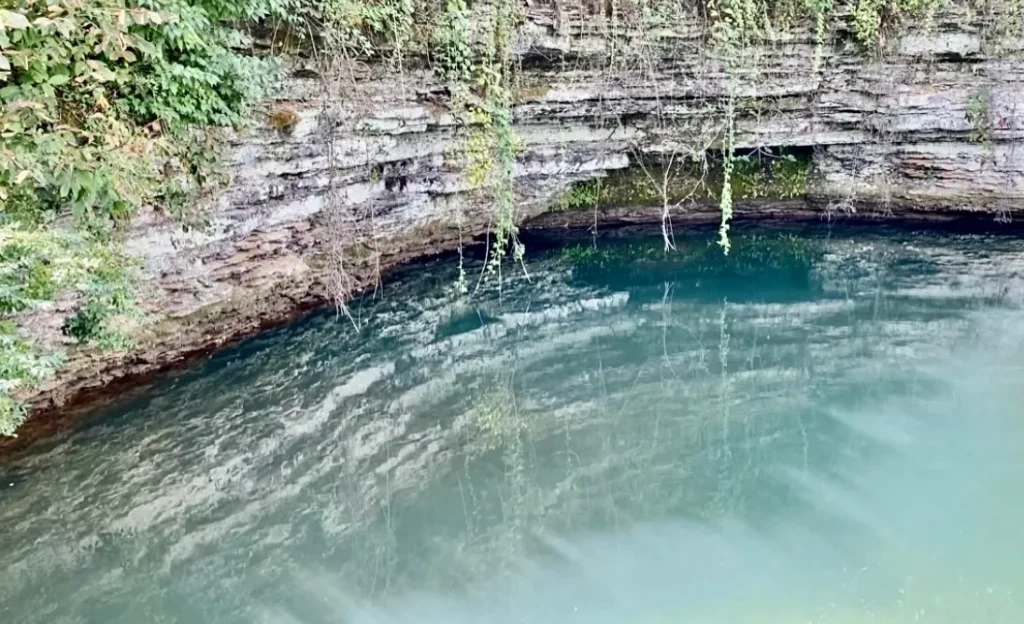
The next year, in 1775, a group of pioneers came here from Westmoreland, Pennsylvania and in that group was, John McClelland. McClelland surveyed the land here, built a cabin and established McClelland Station. About 30 different families soon settled here and Colonel Floyd gave the land with the spring to McClelland. McClelland chose to build a fort on the hill just above the spring, close to where the monument sits today. The pioneers had many challenges to scratch out homes and farms in the area but were happy for their opportunity to start fresh and improve their status in life. The threat of attack by Native Americans was always present and the settlers remained vigilant.
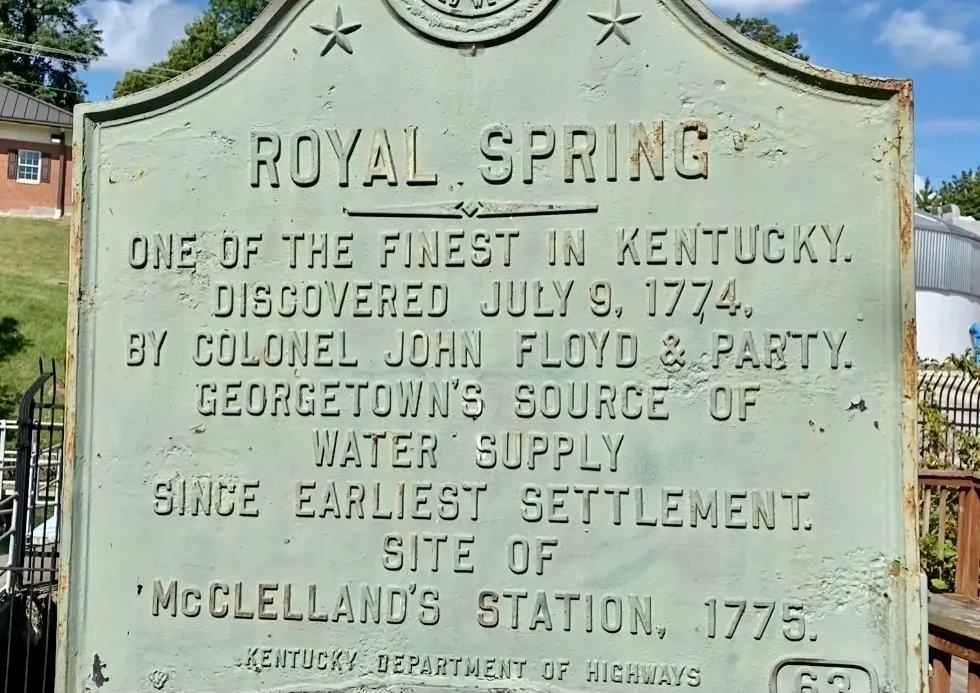
On 29 December 1776, Native Americans led by the Mingo Chief Plukkemehnotee or better known as “Pluggy”, attacked the fort at McClelland’s Station. The pioneers held off their attackers but sadly, McClelland and Chief Pluggy were both killed. Chief Pluggy was buried on a bluff near the spring and a legend existed for many years that the echo heard in the area, was Chief Pluggy’s is Death Cry.
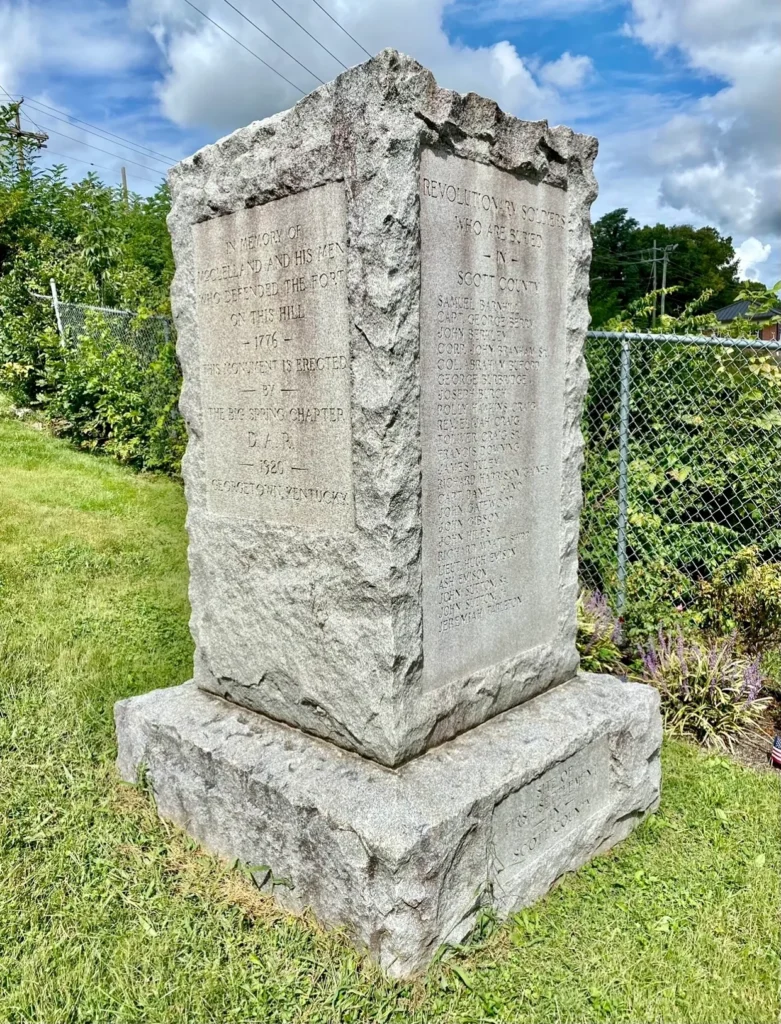
Today a monument stands at the location in honor of McClellan and his men and lists each of them on it. The monument also lists the names of the many Revolutionary War veterans that are buried in Scott County.
Due to the constant threat of attack and lack of leadership, McClellan’s Station was abandoned in 1777. The area was soon again settled with in 1782, when Reverend Elijah Craig moved part of his “Traveling Church” congregation here to settle near the spring. They founded a town and called it “Lebanon”, after the land of milk and honey in the bible. In 1790, the name changed to “Georgetown”, after President George Washington, who was incredibly popular at the time.
Reverend Elijah Craig distilled bourbon whiskey at the spring and many say that he was the first to char the barrels for corn liquor that gives bourbon it’s distinct flavor and color. If it is true that he was the first, it makes the spot at Royal Springs, the “birthplace of bourbon”. It must be noted, though, that some say that story is a legend and the folks over in the county to the east, Bourbon County, aggressively say the birthplace of bourbon is there.
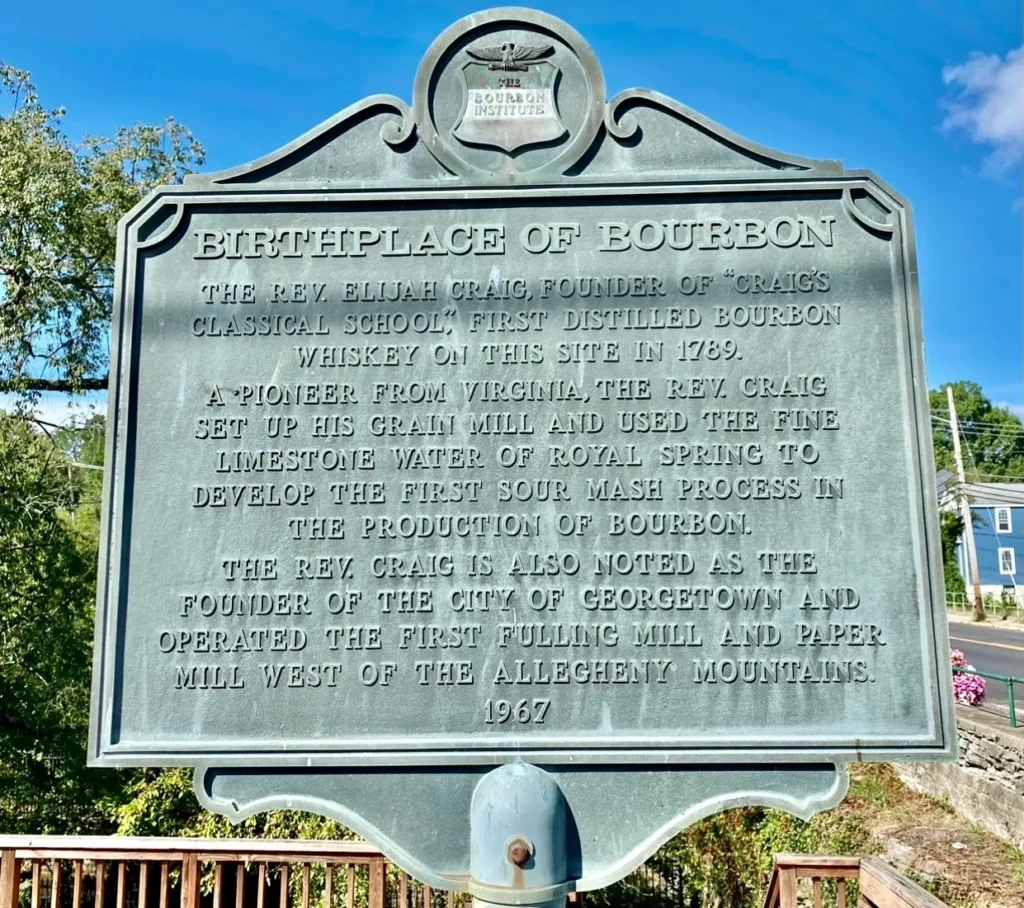
Reverend Elijah Craig also established the first fulling mill and paper mill west of the Allegheny Mountains. He also was proud to fund a school called the Rittenhouse Academy, which eventually became Georgetown College. Georgetown College is still in operation, less than a mile from Royal Springs.
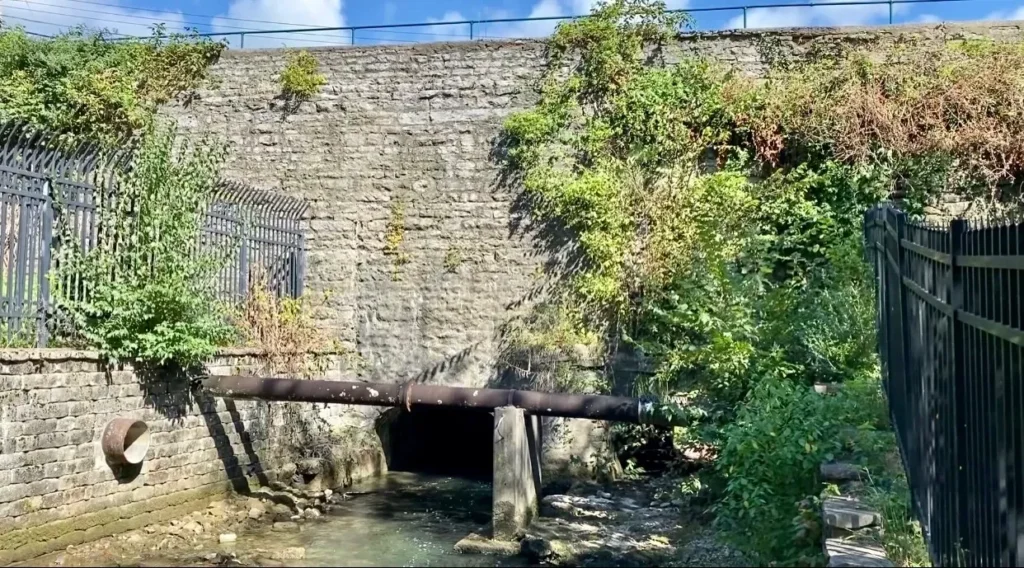
Just about 100 yards from Royal Springs is a bridge that was built around 1800, by Craig and is said to be the oldest bridge in Kentucky. Every day thousands of cars go over the bridge and have no idea of the history that they are passing over. The site also is home to the old jail which was in use from 1892-1991. Can you imagine being in that old jail in the 1990s that was built in 1892?
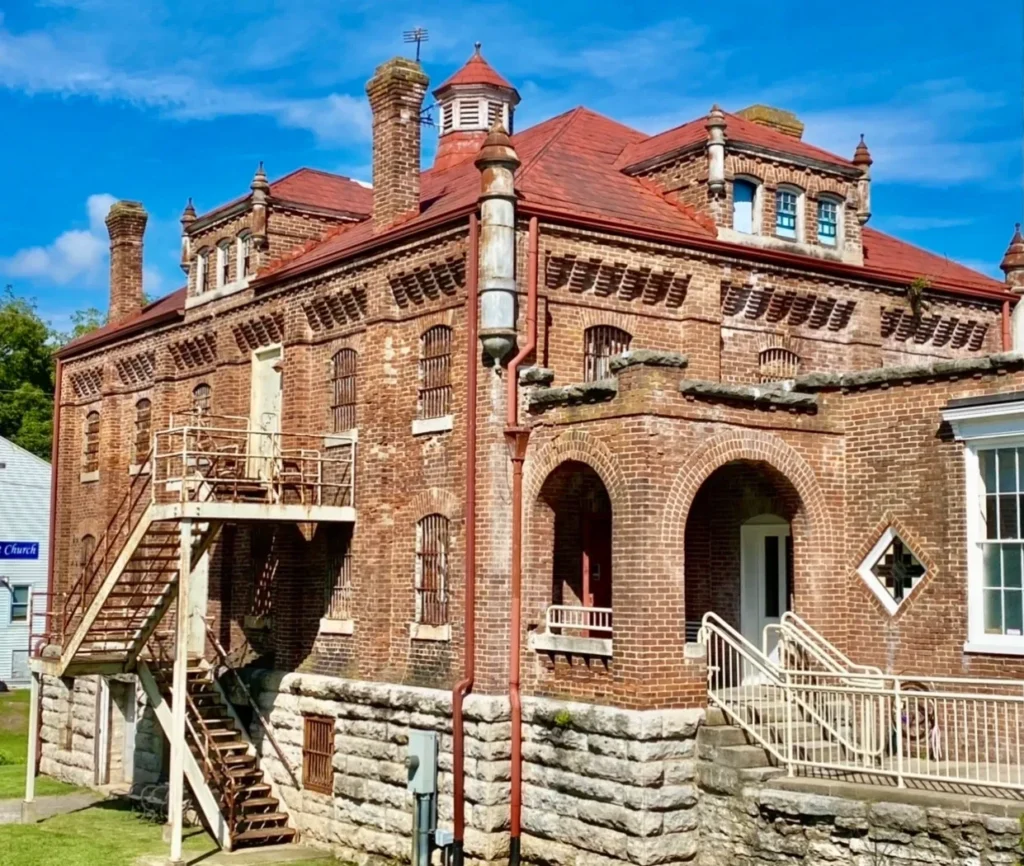
Today the town of Georgetown, is one of the fastest growing communities in Kentucky and is full of rich history from every era. The citizens have every right to be proud of their town’s eventful beginnings. Be sure the see the video from this location at the link below.
– Colonel Russ Carson, Jr., Founder, Family Tree Nuts
